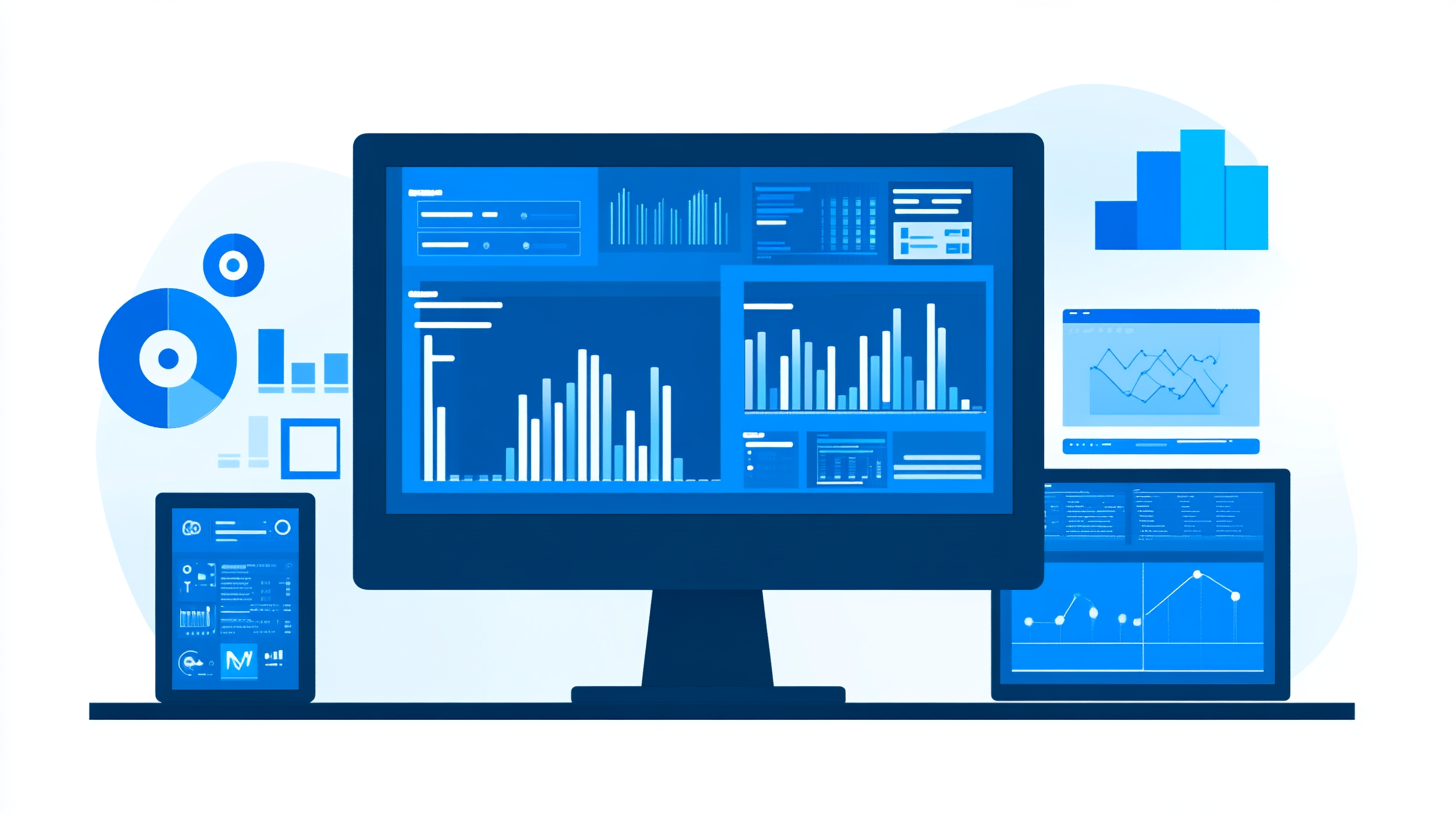Azure Infrastructure Monitoring: Key Tools and Metrics

Azure monitoring is essential for ensuring infrastructure health by providing insights into cloud performance metrics. These metrics reveal the health and usage statistics of Azure resources, helping to predict and prevent downtimes and resource failures. By utilizing Azure monitoring, IT administrators can effectively troubleshoot performance problems and allocate resources efficiently. Performance issues can negatively impact end-user experience and reduce productivity, making it crucial to invest in robust monitoring tools. This investment ensures optimal infrastructure health and enhances overall system reliability.
Understanding Azure Monitoring
What is Azure Infrastructure Monitoring?
Definition and scope
Azure Infrastructure Monitoring involves the continuous observation of Azure resources. This process helps in gathering data about the performance and health of cloud-based systems. Azure monitoring tools collect metrics and logs from various resources. These resources include virtual machines, databases, and networks. The scope of Azure Infrastructure Monitoring extends to both cloud and hybrid environments. This comprehensive approach ensures that IT administrators have a clear view of system operations.
Benefits of monitoring Azure infrastructure
Monitoring Azure infrastructure offers several advantages. IT administrators can troubleshoot performance problems effectively. Monitoring provides insights into resource utilization and application performance. This data supports root cause analysis of performance issues. Administrators can identify optimization opportunities through detailed analysis. Effective resource allocation becomes possible with accurate monitoring data. Azure monitoring enhances system reliability and reduces downtime risks.
Challenges in Azure Monitoring
Common issues faced
Azure monitoring presents several challenges. One common issue is the complexity of managing multiple resources. Each resource generates a large volume of data. Analyzing this data requires significant effort and expertise. Another challenge involves integrating monitoring tools with existing systems. Compatibility issues may arise during integration. Ensuring data accuracy and consistency is also a concern. Inaccurate data can lead to incorrect conclusions and actions.
Solutions and strategies
Several strategies can address these challenges. Automation plays a crucial role in simplifying monitoring tasks. Automated alerts notify administrators of potential issues. Integration with third-party tools enhances monitoring capabilities. These tools provide additional features and functionalities. Regular training ensures that IT staff remain updated on best practices. Continuous improvement processes help refine monitoring strategies. Feedback from monitoring activities guides future enhancements.
Key Tools for Azure Monitoring

Azure Monitor
Features and capabilities
Azure Monitor provides a comprehensive solution for collecting and analyzing data from cloud and on-premises environments. This tool maximizes application performance and availability by delivering insights into system behavior. Azure Monitor collects metrics, logs, and traces, offering a unified view of infrastructure health. The tool includes features like log analytics, metrics aggregation, and alerts. These features help IT administrators diagnose issues quickly and optimize system performance.
How to set up and use Azure Monitor
Setting up Azure Monitor involves configuring data sources and defining metrics to track. Administrators can use the Metrics Explorer to analyze collected data interactively. Integration with other Azure services enhances monitoring capabilities. Azure Monitor allows users to set up alerts for specific conditions. This proactive approach helps in responding to potential issues promptly. The setup process ensures that organizations can maintain optimal infrastructure health.
Azure Log Analytics
Overview and benefits
Azure Log Analytics is a powerful tool within Azure Monitor. It enables querying and analyzing log data using the Kusto Query Language (KQL). This tool provides deep insights into system operations and performance. Log Analytics helps in identifying trends and diagnosing issues. The tool supports root cause analysis by offering detailed log data. Organizations benefit from improved decision-making and resource management.
Integration with other Azure services
Azure Log Analytics integrates seamlessly with various Azure services. This integration enhances its monitoring capabilities. Services like Azure Functions and Azure App Service work well with Log Analytics. This compatibility allows for deeper insights into application performance. The integration ensures that administrators have a comprehensive view of their infrastructure. Effective monitoring becomes possible with this interconnected approach.
Azure Application Insights
Key functionalities
Azure Application Insights focuses on application performance monitoring. This tool provides real-time insights into application behavior. Key functionalities include tracking response times, request rates, and error rates. Application Insights helps in identifying bottlenecks and performance issues. The tool supports continuous improvement by offering actionable insights. Organizations can enhance user experience through effective application monitoring.
Use cases and implementation
Azure Application Insights is ideal for web application monitoring. IT administrators use it to track application health and performance. The tool supports various use cases, including performance optimization and issue diagnosis. Implementation involves integrating Application Insights with existing applications. This process provides valuable data for improving application reliability. Organizations achieve better performance outcomes through strategic use of this tool.
Essential Cloud Performance Metrics

Performance Metrics
CPU and memory usage
Monitoring CPU and memory usage is crucial for maintaining optimal performance in Azure environments. High CPU usage can indicate resource-intensive applications or processes. Administrators should track CPU usage to ensure efficient resource allocation. Memory usage provides insights into application performance and potential bottlenecks. Monitoring these metrics helps prevent system slowdowns and ensures smooth operations.
Network performance
Network performance metrics are vital for understanding the health of Azure applications. Key metrics include network availability, responsiveness, and throughput. Network availability measures the uptime of network resources. Responsiveness indicates how quickly the network responds to requests. Throughput measures the amount of data transferred over the network. Monitoring these metrics ensures reliable and efficient network operations.
Availability Metrics
Uptime and downtime
Uptime and downtime metrics provide insights into the availability of Azure services. Uptime measures the percentage of time a service is operational. Downtime indicates periods when the service is unavailable. Monitoring these metrics helps identify potential reliability issues. Organizations aim for high uptime to ensure continuous service availability.
Service health status
Service health status metrics offer a comprehensive view of Azure service performance. These metrics track the operational status of various services. Monitoring service health helps detect issues early and ensures timely resolution. Administrators use these metrics to maintain service reliability and user satisfaction.
Security Metrics
Threat detection
Threat detection metrics play a critical role in maintaining security within Azure environments. These metrics identify potential security threats and vulnerabilities. Monitoring threat detection metrics helps prevent unauthorized access and data breaches. Organizations prioritize security to protect sensitive information and maintain trust.
Compliance monitoring
Compliance monitoring metrics ensure that Azure environments adhere to regulatory standards. These metrics track compliance with industry regulations and internal policies. Monitoring compliance helps organizations avoid legal issues and maintain operational integrity. Administrators use these metrics to ensure adherence to best practices and standards.
Best Practices for Maintaining Infrastructure Health
Setting Up Alerts and Notifications
Importance of alerts
Alerts serve as an essential component in maintaining infrastructure health. Alerts provide real-time notifications about potential issues within the Azure environment. These notifications enable IT administrators to address problems before they escalate. Alerts help in minimizing downtime and ensuring continuous service availability. Proactive management of alerts contributes to optimal system performance.
Configuring alerts in Azure
Configuring alerts in Azure involves setting specific criteria for monitoring. Administrators define thresholds for various metrics such as CPU usage and network performance. Azure Monitor allows users to create alert rules based on these thresholds. The system sends notifications through email or SMS when conditions meet the defined criteria. Proper configuration ensures timely responses to potential threats.
Regularly Reviewing and Analyzing Metrics
Importance of data analysis
Data analysis plays a crucial role in understanding infrastructure health. Analyzing metrics helps identify trends and patterns in system performance. IT administrators use this information to make informed decisions about resource allocation. Data analysis supports root cause identification for performance issues. Effective analysis leads to improved operational efficiency and reliability.
Tools for data visualization
Tools for data visualization enhance the interpretation of Azure monitoring data. Azure Monitor offers dashboards and visualizations for examining data from different perspectives. Users can customize dashboards to display relevant metrics and insights. Advanced analysis capabilities, like anomaly detection, provide deeper insights into system behavior. Visualization tools facilitate efficient data interpretation and decision-making.
Continuous Improvement and Optimization
Iterative monitoring processes
Iterative monitoring processes contribute to continuous improvement in infrastructure health. Regular monitoring helps identify areas for optimization and enhancement. IT administrators refine monitoring strategies based on feedback and performance data. Continuous iteration ensures that monitoring processes remain effective and relevant. Organizations achieve better performance outcomes through ongoing refinement.
Leveraging feedback for improvements
Leveraging feedback is vital for optimizing infrastructure health. Feedback from monitoring activities provides valuable insights into system operations. IT administrators use this information to implement changes and enhancements. Continuous feedback loops support adaptive strategies and proactive management. Organizations benefit from improved performance and reduced downtime through effective feedback utilization.
Monitoring Azure infrastructure proves essential for maintaining optimal performance and reliability. Azure monitoring tools provide insights into system health, enabling IT administrators to address performance issues swiftly. Users of Azure Monitoring Tools emphasize the importance of understanding the Azure environment to minimize downtime and optimize resource allocation.
"Investing in a powerful Azure performance monitoring tool helps give you a deeper understanding of your entire Azure environment at any given moment."
Azure Monitor offers comprehensive data, enhancing operational efficiency and supporting strategic decision-making. Leveraging these tools ensures that organizations achieve their performance goals effectively and efficiently.
See Also
Maximizing Savings on Azure Cloud Infrastructure Costs
Understanding Azure Disk Storage Choices and Costs
Expanding App Capabilities Using Azure Load Balancer
